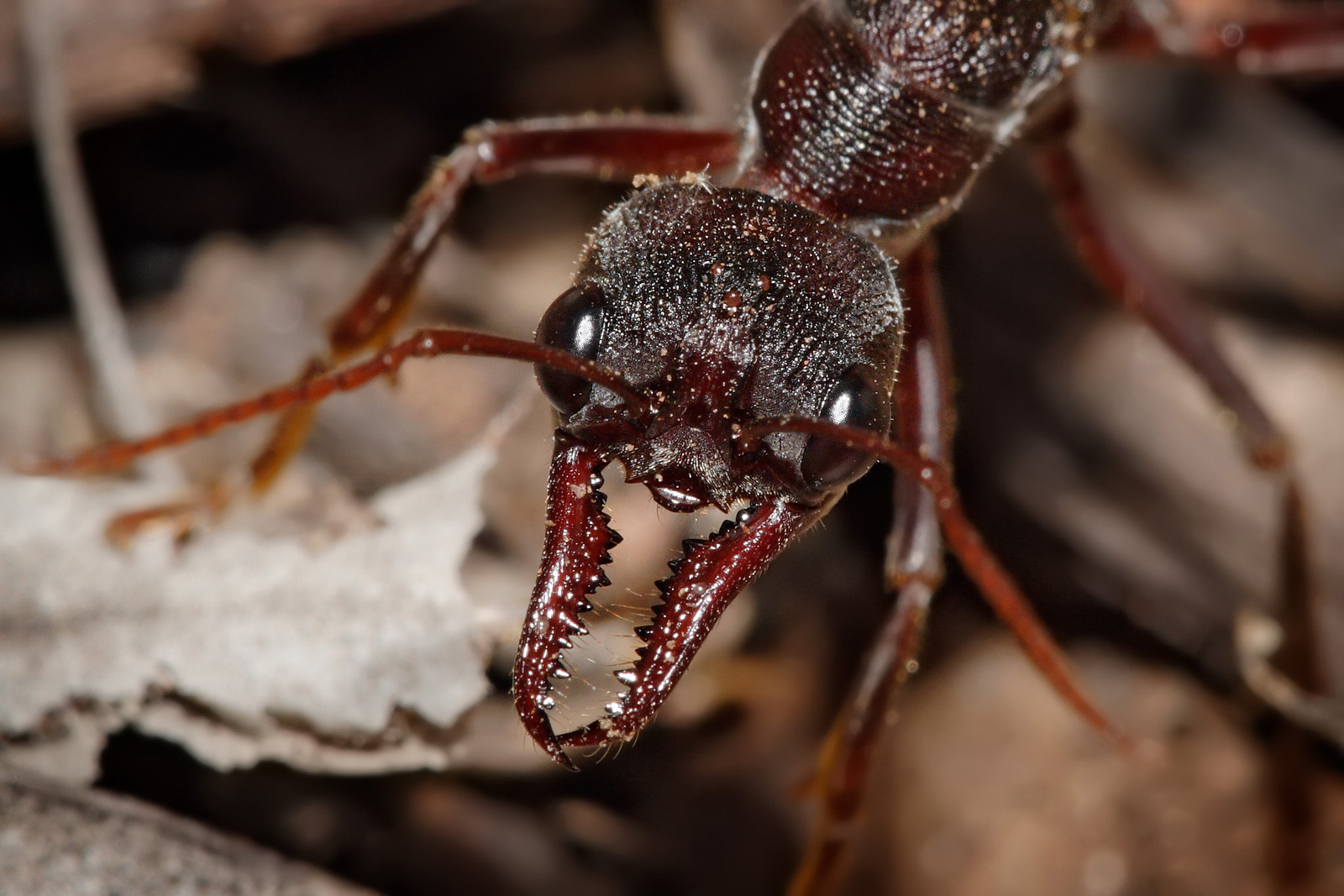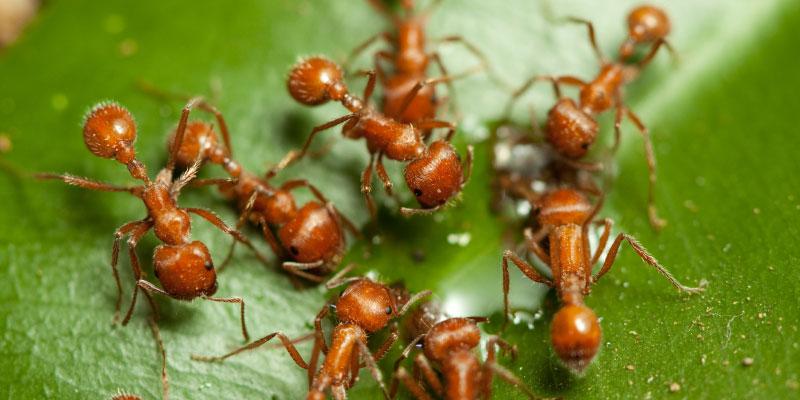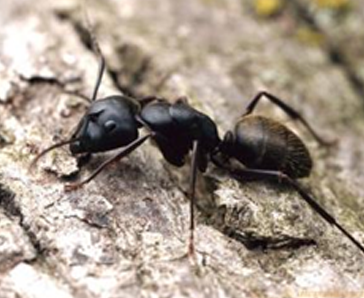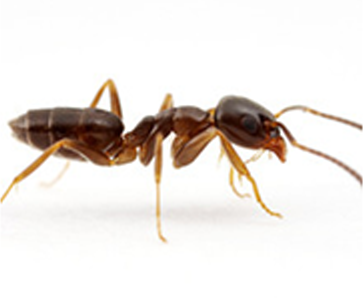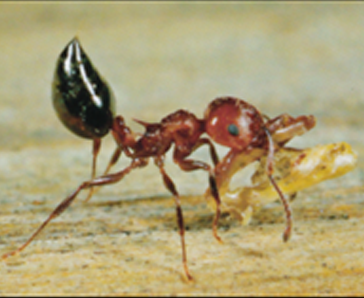
ANTS
Arkansas Ants
Fire Ants
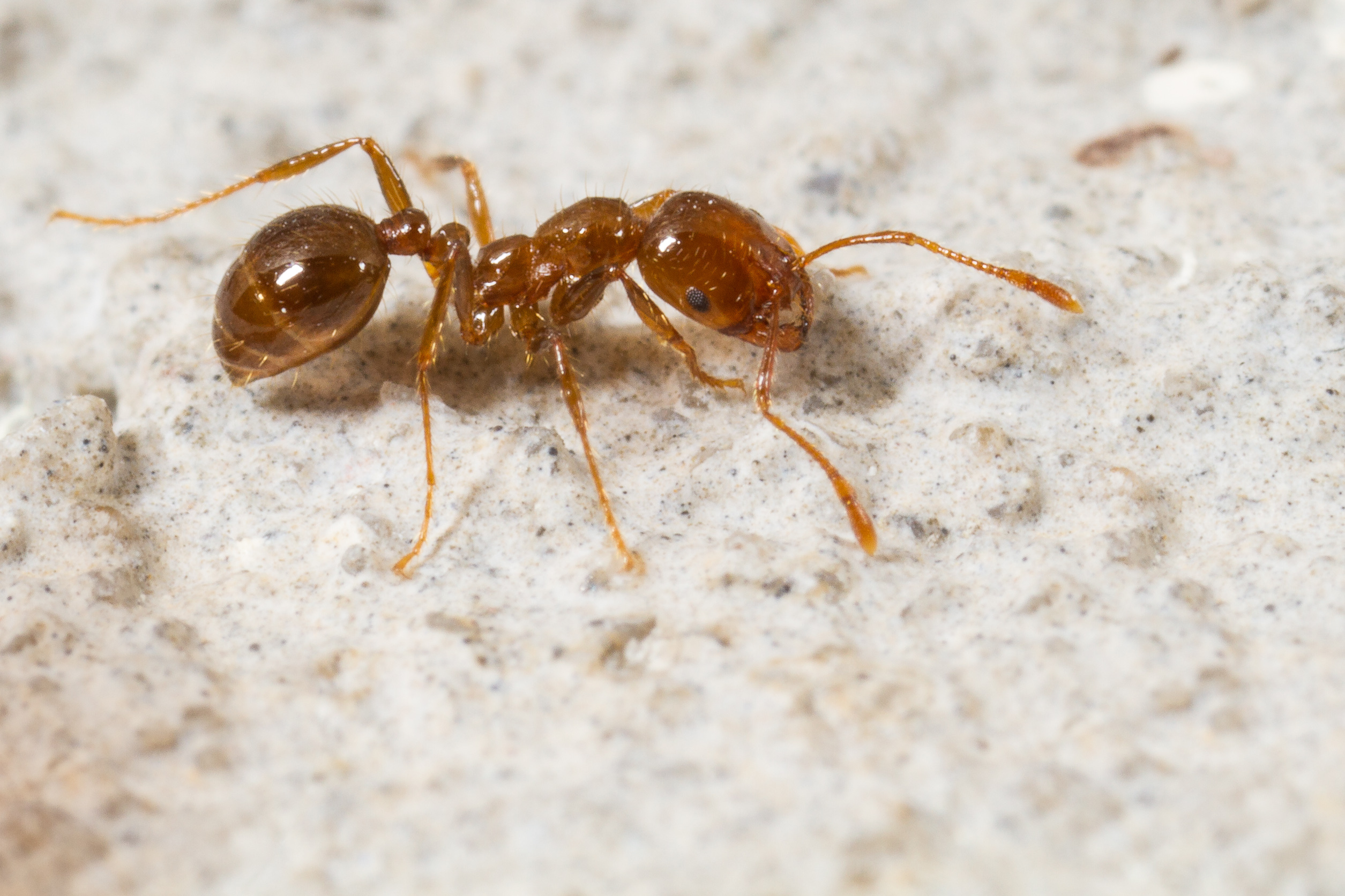

Being stung by one or more of these ants will immediately make you realize where their name comes from. Your skin feels like it is on fire! While most ant species have lost the ability to sting, fire ants have retained their stinger and venom gland through their evolutionary process and are more like wasps in that regard. Fire ants are relatively easy to control with the proper treatment strategy.
Color: Red
Appearance
Reddish, about 1/16”to 1/4”.
Behavior, Diet & Habit
Typically nest in the ground. At times, nests may appear as visible. Large colonies can have up to 250,000 workers. Very active and aggressive, they will sting any intruding animal repeatedly.
Fire ants are omnivorous. Fire ants will feed on animal or vegetable sources of food. The fire ant worker’s diet includes insects, earthworms, ticks, spiders, arthropod eggs, honeydew and other sweets. Plant sources of food include seeds. Young and newborn vertebrate animals eaten by fire ants include birds, rodents and calves.
Reproduction
Total time from egg to adult averages 30 days; workers may live up to 180 days; queens live two to six years.
More Information
Though not a native species in North America, the red imported fire ant has become a common nuisance throughout the southern United States, ranging from Florida to California and as far north as Oklahoma and Virginia. The red imported fire ant was accidentally brought into the United States in the 1930s via a shipment of cargo. When attacking, fire ants first use their mandibles to grip their prey, and then inject venom through a stinger. A fire ant colony may contain 100,000 to 500,000 insects, thus increasing the likelihood that multiple stings will be inflicted.
Commonly Asked Questions about Fire Ants
Q: How do I identify fire ants?A: In areas where fire ants are commonly found, most people identify this pest by the appearance of the mound. The painful sting of the fire ant’s bite is another good indicator, but not recommended as a method of identification. Fire ants build mounds in almost any type of soil, but they prefer open sunny areas such as pastures, parks, lawns, and fields.
Q: How can I prevent fire ants? A: Two methods of prevention work well. The first, and my favorite for states with high concentrations of fire ants, is to broadcast fire ant bait.
Q: What if I already have active mounds in the yard? A: You will usually have better results by baiting each mound individually.
Q: Are fire ant stings lethal?A: While their bites are painful to everyone, only a small percentage of people are allergic. Much like a bee sting, a fire ant sting can be serious, even lethal.
Q: What if I have an allergic reaction to the sting?A: Excessive swelling, itching or redness at the site of the sting, or other symptoms like shortness of breath, thickening of the tongue, or profuse sweating are all symptoms of a serious allergic reaction. Seek professional medical attention immediately!


Odorous House Ants
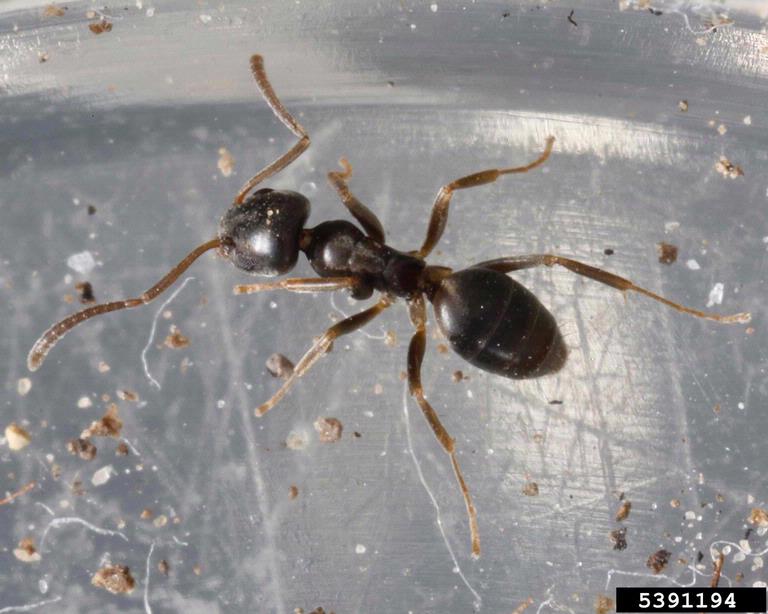
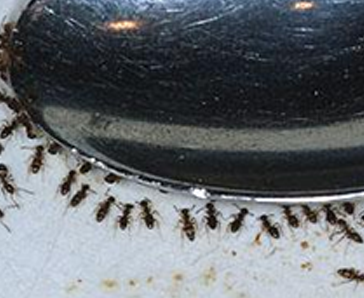
These ants get their name from the unpleasant odor they produce when crushed or threatened, making them very easy to identify. Odorous house ants do not sting, but defend their colony with the same chemical secretion that gives them their name. These ants can sometimes be very difficult to control within structures. A long-term treatment strategy is often necessary to eliminate all colony sites.
Size:
Workers: 1/16” to 1/8”
Where it lives
Odorous house ants nest indoors and outdoors.
What it eats
Honeydew, a sugary liquid made by small insects and other sugary food left out by humans. Odorous house ants also eat dead insects and spiders.
Quick facts
One of the United States’ most common household ant pests, odorous house ants have a hard-to-tame sweet tooth that often leads them wandering across your kitchen counters day and night, looking for sugary snacks. At first glance, odorous house ants may seem like any ordinary ant—small and brownish black or black in color. But if you squish one odorous house ant and take a whiff you’ll find they smell like coconut.
This odor is their primary defense against contenders. Unlike some other ant species, odorous house ants don’t have stingers to ward off trouble. When odorous house ants are disturbed, they run around erratically, spraying their odor from tiny sacs called anal glands in their rear ends.
Odorous house ant colonies can range from fewer than 100 workers and one queen to more than 10,000 workers and hundreds of queens. Its great love of sweet stuff is one of the odorous house ant’s most remarkable traits. Laboratory studies show that, when given a choice, they make a bee-line for sugar over all other foods. Outdoors, they get their sugar from flower nectar and honeydew.
Carpenter Ants
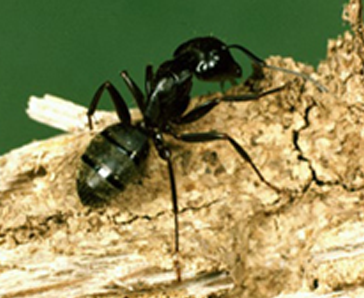
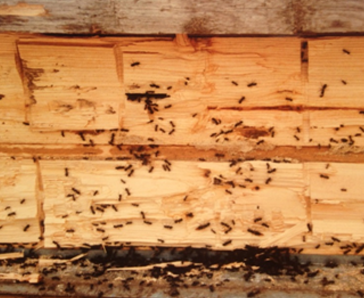
The black carpenter ant is a common invader of homes in the northeastern United States. In their natural habitat, carpenter ants aid in the decomposition of dead, decaying trees. They normally nest in logs, stumps, and hollow trees. However, the large, dark-colored workers often invade homes in search of food. These ants seldom tunnel into dry, sound wood, but they may excavate moist, rotting wood and other soft materials (such as foamed plastic insulation board) to make satellite nests. Rarely will the expansion of a nest into a building’s wooden timbers cause structural damage. Homes built in wooded areas are especially subject to infestation. Carpenter ants and termites are social insects that live in colonies and excavate wood. Because of this, homeowners may mistake one for the other. It is important to distinguish between the two because each requires different methods of control.
Carpenter Ants
•Workers are wingless, dark shiny brown to black in color, and 1/4 to 1/2 inch in length. They may be seen crawling around inside a residence.
•Winged reproductive forms resemble workers in color and shape but are up to 3/4 inch long.
•The body is constricted between the thorax and the abdomen.
•The antennae are elbowed.
•The front wing of a reproductive ant is longer than the hind wing.
Color: Black and Brown
Food:
These ants feed primarily on dead and sometimes living insects, nuts, seeds and even honeydew produced by aphids and scale insects.
Habitat:
They’re usually found nesting in rotted tree limbs or tree trunks but can be found within structures especially if there is water damage or rot to structural timbers. Using their strong mandibles, they tunnel out smooth galleries within the wood to house and protect their colony and young.
Argentine Ants


Researchers have determined that at any given time there are a staggering 10 quadrillion ants alive and well and roaming the face of the earth. Infamous for their super-sized colonies, Argentine ants are prolific breeders and even worse, they are aggressive. They relentlessly assault other ant species and use their sheer numbers, often joining forces with other Argentine ant colonies, to conquer and destroy weaker enemy ant colonies.
Appearance
Argentine ant colonies are hard to miss due to their massive size. Individually, however, Argentine ants are only 2-3mm long, wingless, and range in color from light to dark brown. Males and queens are slightly larger and darker. The Argentine ant can be distinguished from other ant species by the following characteristics:
• Mandibles lined with 5 – 8 large teeth
• Eyes set below the widest point of the head
• Antennae divided into 12 segments
• A single node separates the thorax and the abdomen
•Body surface is smooth and lacks hair on the dorsum of the head and thorax
•No sting, though they can bite
•Wide ant trails are often seen traveling up trees and buildings in search of food
•Emits a musty odor when crushed versus the acidic smell most ants have
•Habitat/Diet
•Argentine ants have adapted extremely well to urbanized areas in the southern United States, especially in California. They nest in a wide variety of places, both moist and dry.
Acrobat Ants
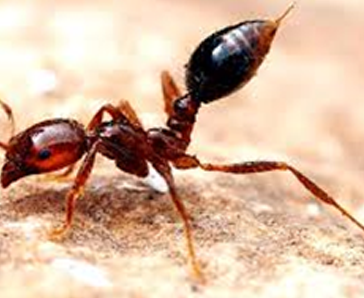
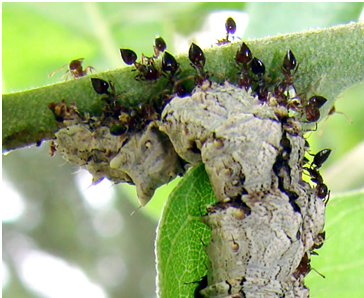
Acrobat ants get their common name from their ability to acrobatically raise their abdomen over their thorax and head, especially when disturbed. There are various species of this light brown to black ant found throughout the United States, even at altitudes of up to 8,000 feet.
Habits
Acrobat ants typically feed on honeydew, a sugary waste excreted by aphids and mealybugs, but they also eat live and dead insects including termite swarmers.
Habitat
Outside, most species of acrobat ants nest under rocks or in logs, firewood and trees where wood decay allows them to create tunnels. They also build their nests in abandoned cavities carved out by other insects like termites and carpenter ants.
Pharaoh Ants
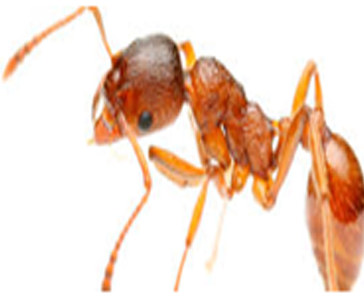
The ant is commonly known as the Pharaoh ant. The name possibly arises from the mistaken idea that it was one of the plagues of ancient Egypt. This common household ant is distributed worldwide and carries the dubious distinction of being the most difficult household ant to control.
Distribution
Pharaoh Ants has been carried by commerce to all inhabited regions of the earth. This ant, which is probably a native of Africa, does not nest outdoors except in southern latitudes and has been able to adapt to field conditions in southern Florida.
Pavement Ants

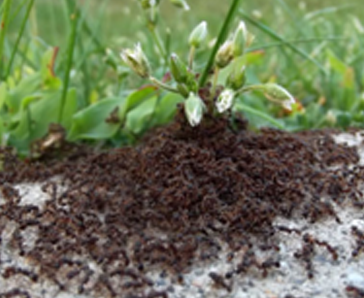
Pavement ants are one of the most common species in the U.S. So common, in fact, they are often not viewed as much of a nuisance…until they decide to invade your outdoor picnic.
An introduced, soil-nesting species of ants, it is widely believed that pavement ants were transported to the U.S. in the holds of European merchant vessels during the 1700s to 1800s. The ships were filled with soil to provide weight on the overseas voyage. Once in port, the soil was removed, and replaced with goods to carry back across the Atlantic.
Appearance
The pavement ant is about 1/8–1/16-inch long. They range in color from brown to black with paler legs and antennae. Despite their differences, however, these are the distinguishing characteristics of the pavement ant:
• A pair of spines on the back
• Two nodes on the petiole
• Grooves on the head and thorax
• 12-segmented antennae with a three-segmented club
• Stinger in the last abdominal segment
• Queens and swarmers have wings and are twice as large as the workers
Habitat
Pavement ants nest outdoors under stones, along curbs or in cracks of pavement. They also nest indoors in walls and under floors. Pavement ants are a familiar sight during the summer months. They can be seen trailing along sidewalks, driveways, patios and cracks in foundation walls. Sometimes they can be seen carrying soil or excavated debris, food or eggs from one colony to another.
Behavior/Diet
Pavement ants invade buildings while foraging for food. Pavement ants will eat almost anything, including honeydew from aphids, nectar, fruits, seeds and insects. They will eat most household foods, including meats, grease, bread, cheese and ice cream. Pavement worker ants can become a nuisance when large groups infest a kitchen or garden patio.
Big Headed Ants
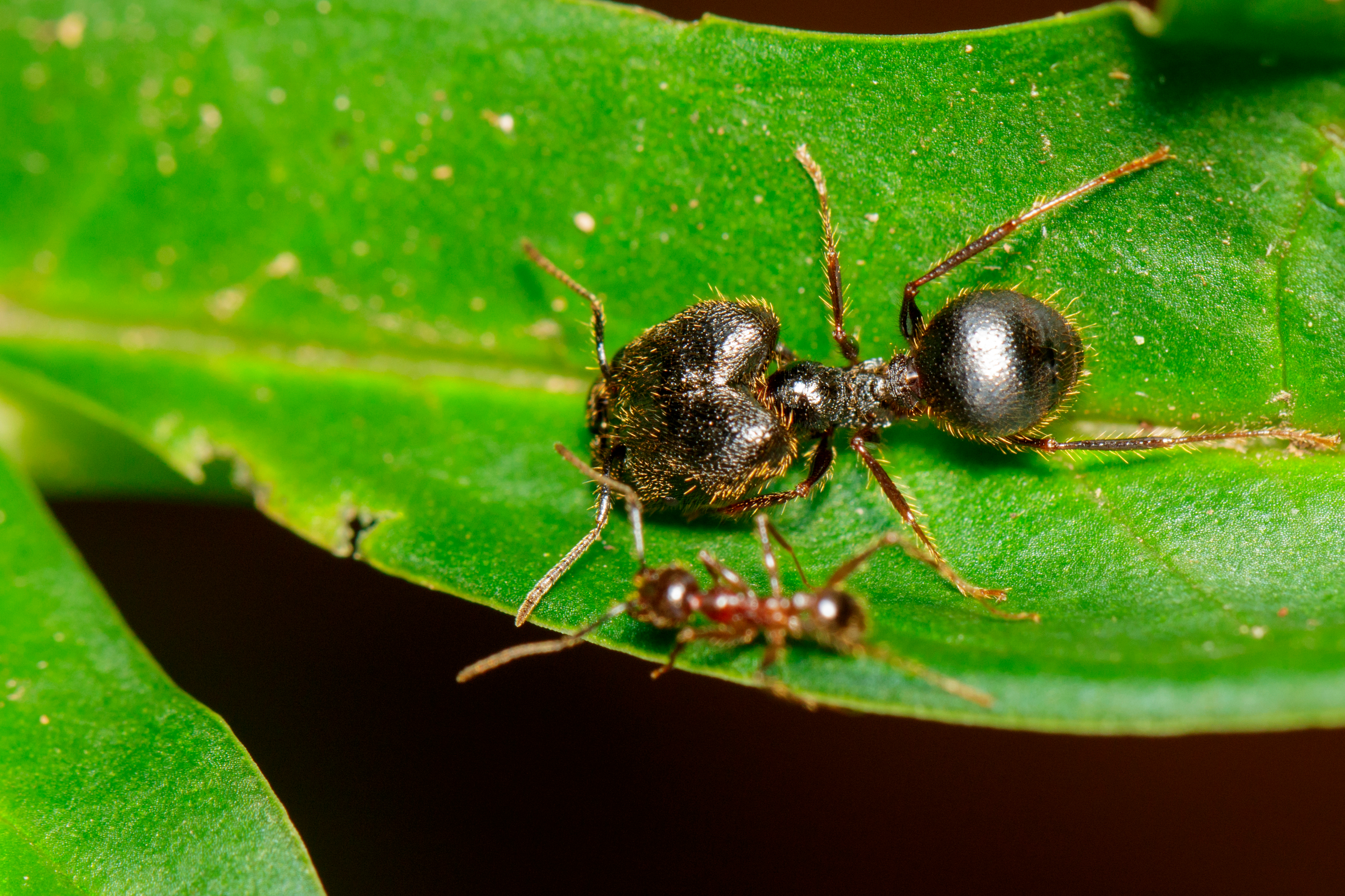
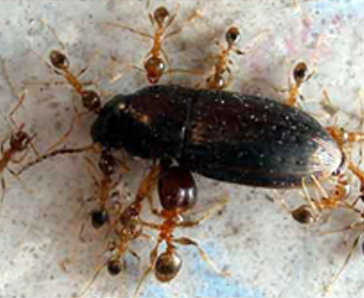
Where it lives
Big-headed ants nest in rotting stumps, logs, and under rocks in forests and backyards. They also nest in open sandy ground.
What it eats
Dead insects and sugary substances, Big-headed ants also forage on human foods like peanut butter and tuna fish.
What’s the big deal?
Big-headed ants eat everything from dead insects to sugary foods. Usually they stick to the great outdoors, but occasionally they make their way into people’s homes in search of food. Only then are they considered pests.
Ghost Ants
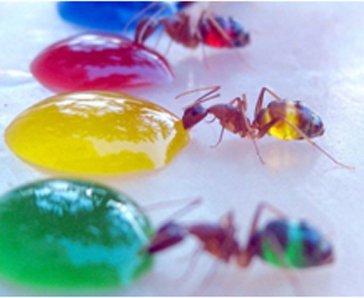
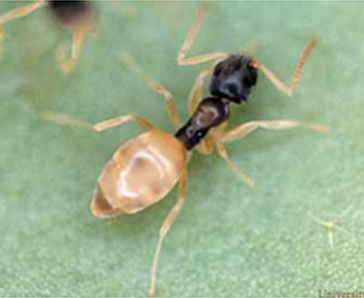
In the world of ants, Ghost ants are the strangest. The species gets its name from their translucent legs and abdomens which seem to vanish in thin air when foraging on light surfaces.
Appearance
Ghost ants are extremely small and pale in color, which makes them difficult to see. Workers are all the same size. Ghost ants can be distinguished from other ant species by the following characteristics:
• Extremely small, about 1/16-inch long
• Antennae divided into 12 segments that gradually thicken closer to the tip
• Head and thorax are very dark in color. Abdomen, legs and antennae are a pale milky white
• Ghost ants are related to odorous house ants, and both emit a coconut-like odor when crushed
Habitat
Ghost ants are highly adaptable nesters, capable of living outdoors and indoors. Outside, they make their nests in the ground near stones, logs or woodpiles, and even moist grass and plant stems.Ghost ants enter buildings on trails that they make along the ground. They also enter houses by trailing on utility lines or tree limbs and shrubs that touch the house.
Geography
The ghost ant is a tropical species, found mainly in south and central Florida. In northern states, these ants have been known to survive only in heated buildings and greenhouses.
Diet
Ghost ants eat honeydew that they collect from aphids and other plant-feeding insects. The worker ants also gather insects to feed the colony. When they are indoors, ghost ants usually prefer sweets.
Little Black Ants
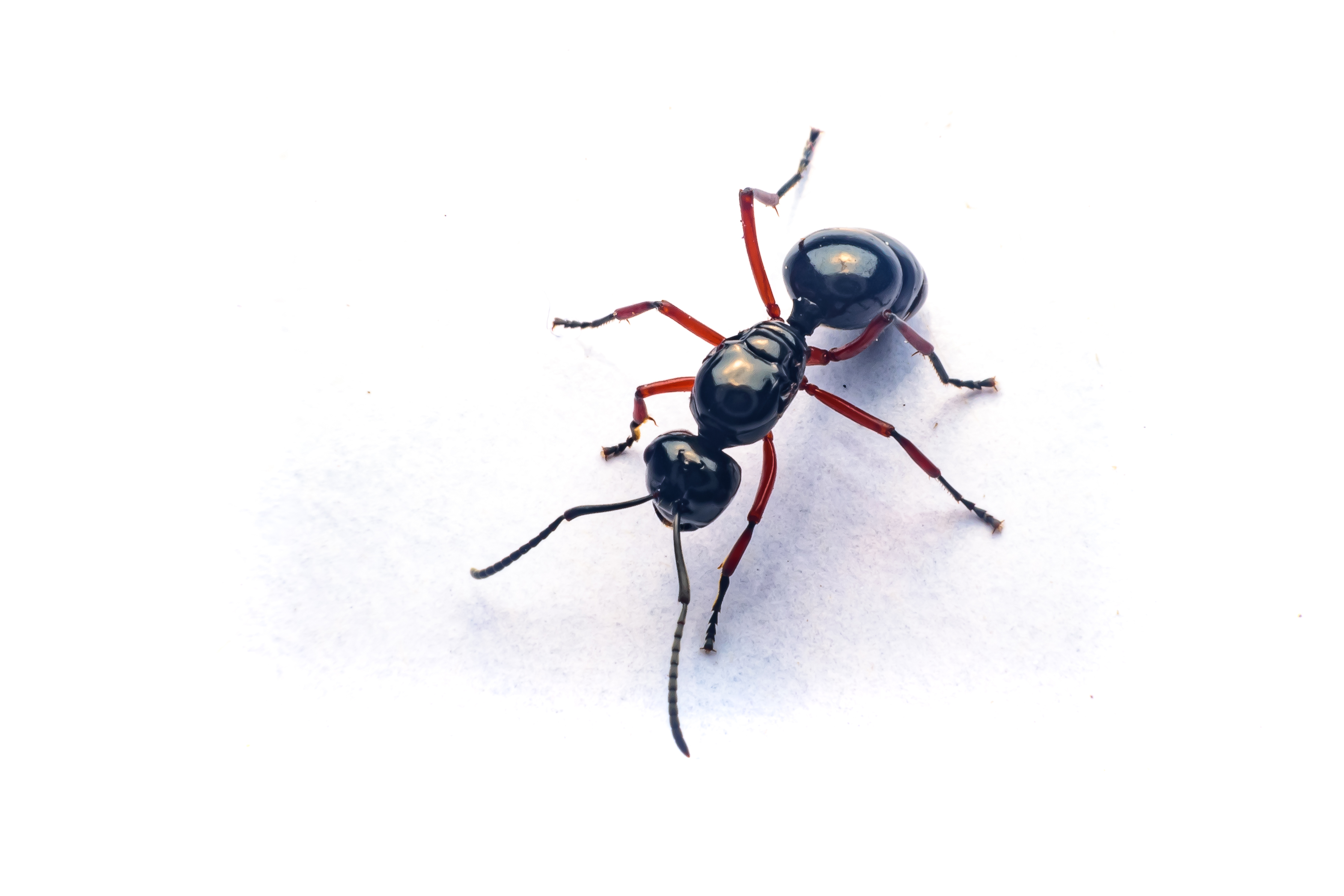
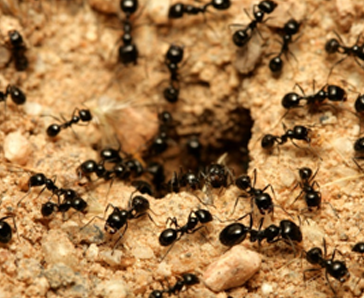
As their common and scientific names imply, little black ants are very small. They’re also shiny in appearance.
Appearance
Little black worker ants are only about 1/16-inch long, though queens are twice the size at about 1/8-inch. They can actually be dark brown or black in color.
Habitat
Highly adaptable, little black ants generally live outside. They build their nests primarily in dark, protected areas under rocks, rotting logs, decaying trees, even cement cracks, but will also thrive in lawns or gardens. Indoors, little black ants build their nests in woodwork, wall voids, baseboards and under carpeting.Little black ants have moderate- to large-sized colonies, with two or more queens in one colony. Mating season is June to August in the United States and mating swarms are common during the summer months; after which mated females form new colonies, which grow quickly.
Geography
Little black ants are a native species found throughout the United States.
Behavior/Diet
Little black worker ants forage in scent-marked trails, which can be seen along sidewalks and foundation walls. If a colony moves inside a building, large populations can invade cracks and crevices, establishing highly visible foraging trails, particularly along counters, cabinets and pantries.
 Little Rock, AR 501-868-3837 | Russellville, AR 479-968-4777 | Hot Springs, AR 501-442-5653 | Fayetteville, AR 479-899-6874
Little Rock, AR 501-868-3837 | Russellville, AR 479-968-4777 | Hot Springs, AR 501-442-5653 | Fayetteville, AR 479-899-6874



